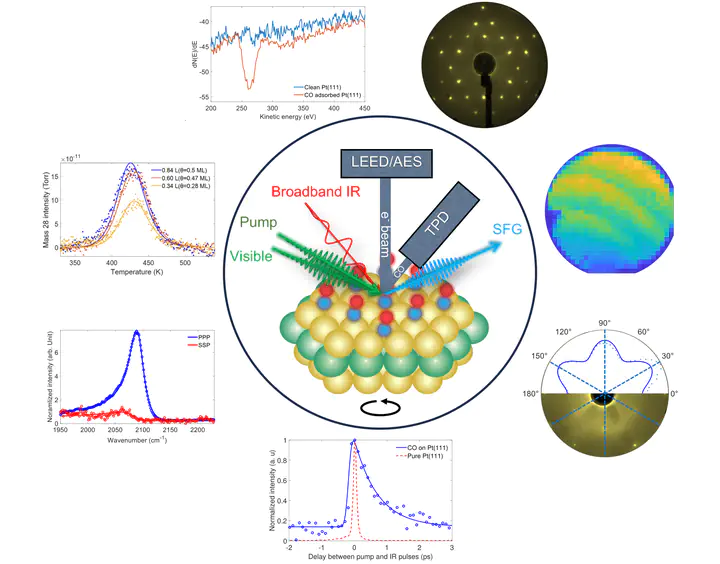Integration of conventional surface science techniques with surface-sensitive azimuthal and polarization dependent femtosecond-resolved sum frequency generation spectroscopy
 Image credit: Zhipeng Huang
Image credit: Zhipeng Huang
Abstract
Experimental insight into the elementary processes underlying charge transfer across interfaces has blossomed with the wide-spread availability of ultra-high vacuum (UHV) setups that allow the preparation and characterization of solid surfaces with well-defined molecular adsorbates over a wide range of temperatures. Within the last 15 years, such insights have extended to charge transfer heterostructures containing solids overlain by one or more atomically thin two dimensional materials. Such systems are of wide potential interest both because they appear to offer a path to separate surface reactivity from bulk chemical properties and because some offer completely novel physics, unrealizable in bulk three dimensional solids. Thick layers of molecular adsorbates or heterostructures of 2D materials generally preclude the use of electrons or atoms as probes. However, with linear photon-in/photon-out techniques, it is often challenging to assign the observed optical response to a particular portion of the interface. We and prior workers have demonstrated that by full characterization of the symmetry of the second order nonlinear optical susceptibility, i.e., the χ(2), in sum frequency generation (SFG) spectroscopy, this problem can be overcome. Here, we describe an UHV system built to allow conventional UHV sample preparation and characterization, femtosecond and polarization resolved SFG spectroscopy, the azimuthal sample rotation necessary to fully describe χ(2) symmetry, and sufficient stability to allow scanning SFG microscopy. We demonstrate these capabilities in proof-of-principle measurements on CO adsorbed on Pt(111) and on the clean Ag(111) surface. Because this setup allows both full characterization of the nonlinear susceptibility and the temperature control and sample preparation/characterization of conventional UHV setups, we expect it to be of great utility in the investigation of both the basic physics and applications of solid, 2D material heterostructures.